Released: 31st May 2004
Writers: Marcos Valle / Ray Gilbert
Peak position: #15
Chart run: 15-28-39-55
Emma Bunton was the only solo Spice Girl who managed not to find herself in difficult-second-album territory with Free Me, the follow-up to 2001’s A Girl Like Me. However, just when it looked like she couldn’t put a foot wrong, along came a divisive fourth single that has generated heated internet debate ever since.

As we approached the mid-‘00s, the phenomenal success of the Spice Girls and their initial solo endeavours was starting to become a distant memory. Recording contracts lay in tatters, sales were down, and doors were beginning to close on the group where once they were flung open. Emma Bunton was, however, the exception to the rule, maintaining an ongoing chart and radio airplay presence with her second album campaign. There had been hurdles along the way; along with Victoria Beckham and Melanie B, she’d parted ways with Virgin Records after the release of her debut album A Girl Like Me. However, she quickly signed with 19 Recordings, which brought her back under the eye of Simon Fuller, who had famously managed the Spice Girls during their peak.
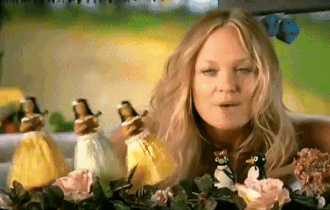
Unlikely as it sounds at a time when R&B was dominating the UK charts, Emma Bunton reinvented herself as a ‘60s diva, drawing influences of Motown and bossa nova into her sound. No one else was making music like this; sometimes, there’s a good reason for that, but not in this case. It was a genius move that stood out because it was so markedly different while keeping Emma Bunton close to her roots as a pop artist. Indeed, she even went so far as to perform an acoustic version of 2 Become 1 on CD:UK at a time when her former bandmates were eager to distance themselves from the Spice Girls. By mid-2004, the Free Me album had peaked at #7 and generated three top ten singles. Make no mistake, though, Emma Bunton worked bloody hard for what were comparatively modest returns; she promoted the album tirelessly, and any resulting goodwill was entirely a product of her unwavering perseverance. There were some safe – or as safe as a solo Spice Girls single could be at that time – options left to stretch the campaign further; No Sign Of Life remains the best Bond theme that never was.
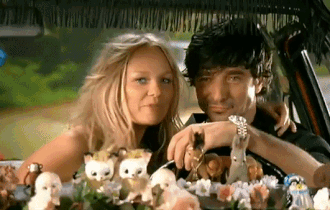
Which all begs the inevitable question that has plagued any retrospective discussion of the Free Me project: why on earth was Crickets Sing For Anamaria released as the fourth – and final – single from it? Well, we’ll try to answer that because there was some optimistic logic behind the decision.

The track was originally composed as Os Grilos by the Brazilian musician Marcos Valle and swiftly followed by an English-language version – called Crickets Sing For Anamaria – in 1968. It’s one of those songs that you might not know by name, but as soon as you hear it, you would feel absolutely sure that you have heard it at some point in your life as a distinctive piece of samba music. Yet despite being covered countless times (most famously by Astrud Gilberto), Crickets Sing For Anamaria had never actually been a hit. So, in that respect, it was entirely rational to try and attach Emma Bunton’s name to the track so that she could be the one to take it into the charts after more than 30 years. Particularly since it fits naturally into the musical identity that she’d carved out for herself. However, there was a catch and a big one at that. The light-hearted lyrics – which are somewhere between quirky and silly – work when Crickets Sing For Anamaria is just ‘there’ as anonymous wallpaper music from another era. But in trying to translate that to a contemporary commercial release, what Emma Bunton essentially had on her hands was a novelty track. And that represented a massive gamble because audiences would either get it, or they wouldn’t. There wasn’t any room to sit on the fence with this one.
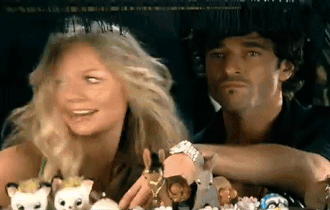
What’s never been in question is that Crickets Sing For Anamaria is a lot of fun. It really is. The bustling bossa nova production, with its playful vibraphone melody, creates an immediate carnival atmosphere and can also be perceived as an aural metaphor for a procession of insects, such is the frenzied way in which it moves. Furthermore, Emma Bunton is the perfect narrator for the tale of the eponymous Anamaria; her voice is – as ever – brimming with warmth and charisma as she regales a story of doomed romance at breakneck speed: “The older brother said, you heard what papa said, you better say goodnight, you better shut the light, and papa told you no, you can’t go out tonight, but papa didn’t know, Maria had a date, and couldn’t let him wait”. The plot isn’t exactly complicated, but it does create a juxtaposition in the enduring appeal of the song and the challenge of turning it into a commercial hit. The lyrics come thick and fast (parts of the second verse are almost indecipherable), so it does require a modicum of concentration to follow the narrative thread; more than you would typically expect from a novelty track (even one that is ostensibly so). Yet, the aura of the production still gives off an air of affable background music intended to gently wash over the listener like a summer breeze, so it’s easy to see how some of the scene-setting about who Anamaria is and what she was doing might have been overlooked.

Although Crickets Sing For Anamaria was sonically consistent with the Free Me album, there’s a vast difference in songwriting style, which is unsurprising, given the track’s origins. However, even making an allowance for that, the tone is arguably too whimsical and folklore-ish in places. Certainly, it’s not often you hear the word ‘repertoire’ thrown casually into a pop song: “When anyone’s in love, the crickets sing a happy song, bu-u-u-ut they didn’t do their repertoire for long”. In the context of Free Me as a whole, the song makes absolute sense. But while the previous singles all courted a sound that would – at some point – have been played on mainstream radio, Crickets Sing For Anamaria doesn’t have the same point of reference. It would be a struggle to know where you’d pitch a song like this to generate airplay now, let alone back in 2004 when options were more limited.
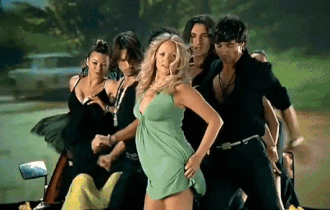
Eventually, we build up to Anamaria’s secret date going disastrously wrong as she’s caught in the act by her family. This is the hook; the bit that needed to catch on, not least because it dominates about half of the total running time: “Suddenly the papa came, and then the mama came, and then the sister came, and then the brother came, and then the uncle came, and then the cousin came, an even dozen came, and I can tell you this, it was a dirty shame”. It succeeds in respect of being incredibly catchy and epitomising the spirited nature of the song. But linguistically, that particular choice of phrase pre-dates the more modern understanding of the term, which leaves Crickets Sing For Anamaria in a bit of a weird place and raises some awkward questions about the family dynamic. It becomes a bit of an elephant in the room; Emma Bunton can’t make the refrain suggestive (and mercifully doesn’t try) because that would be wrong on so many levels. However, there’s no scope to revise the lyrics, so it just leaves the track feeling a little too antiquated to work as a current single.
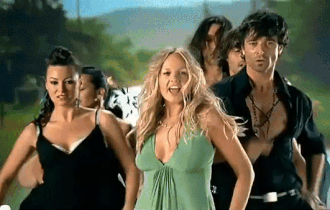
Despite the many logistical challenges Crickets Sing For Anamaria presented, there was never anything to actively dislike here. Nowhere is that more evident than in the music video, which is an utterly charming affair. It presents the song literally with a retro-styled aesthetic that gets away with some naff-looking special effects because it comes across as entirely intentional. We meet the entire family from the song (including Anamaria’s scene-stealing brother), and they’re brilliantly cast. Each and every one – even those barely visible at the back of the shots – is brimming with personality and feel so much more than a random group of extras thrown together for a three-minute pop video. It’s a visual almost more suited to a variety show skit (or, in places, an audition tape for the BBC’s new flagship show, Strictly Come Dancing) and again marks a significant shift from the previous singles. However, it really does successfully pull together all of the elements of the composition and present them in a way that never feels anything less than immensely likeable.
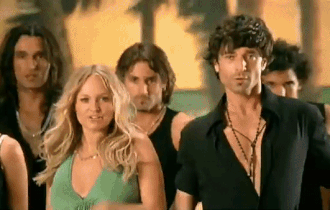
Needless to say, Crickets Sing For Anamaria just didn’t catch the public’s imagination and subsequently peaked at #15 in the UK. While certainly not an outright disaster, there’s no way around the negative impact it had on the momentum that Emma Bunton spent so much effort building up. Perhaps most significant was how radio actively rejected the song; it peaked at #57 on the airplay chart when, by comparison, all of her previous singles had reached the top 20. There were some positives to be drawn in that Free Me re-entered the top 75 and climbed up to #43, which is reasonably impressive considering Crickets Sing For Anamaria really doesn’t come across as an album-selling sort of track. However, it didn’t seem to be enough to convince 19 that there was any value in pursuing the campaign further, and if there was a dirty shame here, this was it. Emma Bunton was the only Spice Girl to sell more copies of her second album than her debut, so she was clearly doing something right. There was every possibility that a less divisive fifth single would have extended that success further.
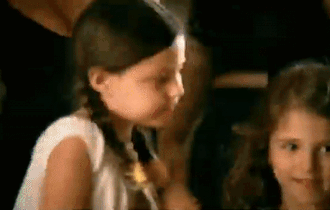
Alas, it wasn’t to be. As ever, hindsight is 20/20, and it’s therefore easy to conclude now that Crickets Sing For Anamaria wasn’t the best choice as the fourth single from Free Me. Yet, controversial a stance as this may be, on balance, it’s difficult to begrudge the decision to take a risk with the song because had it caught the public’s attention in the right way at the right time, it could easily have been a huge hit. Pop music is all-too-often full of what-ifs, but despite everything, at least Crickets Sing For Anamaria isn’t one of them.



